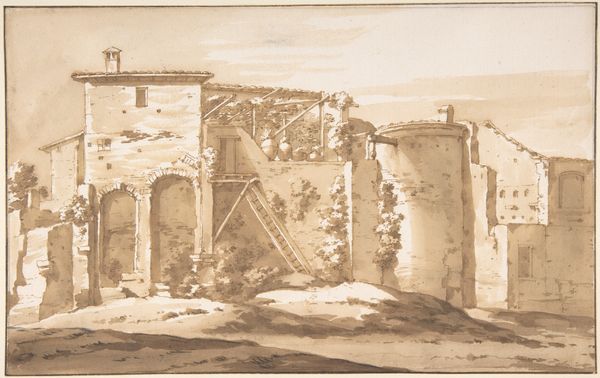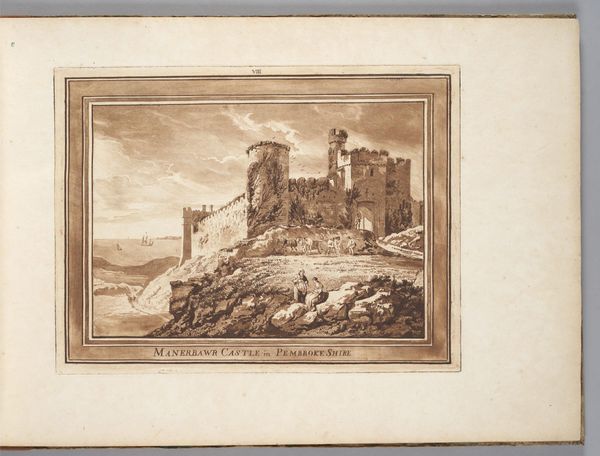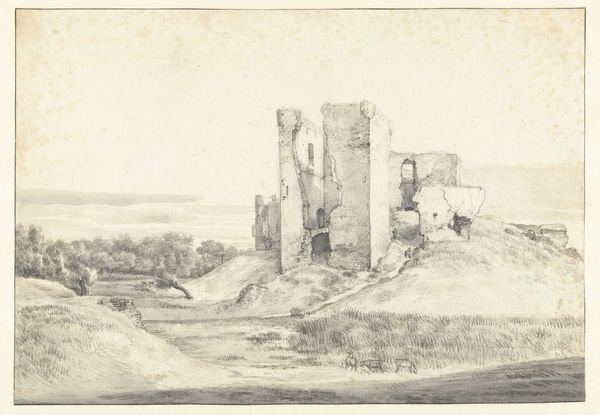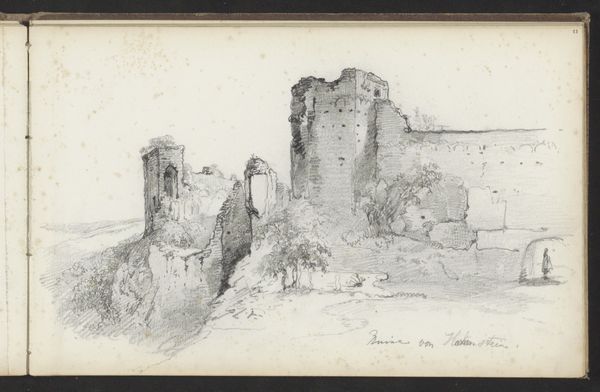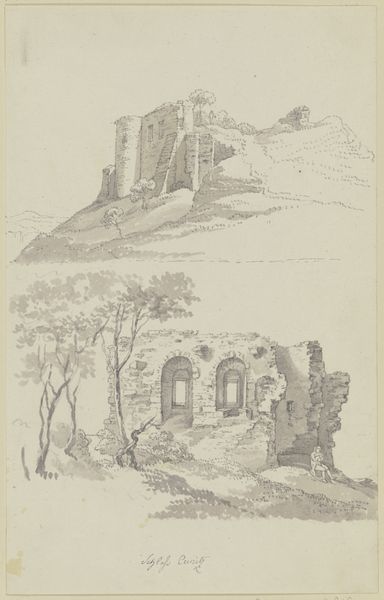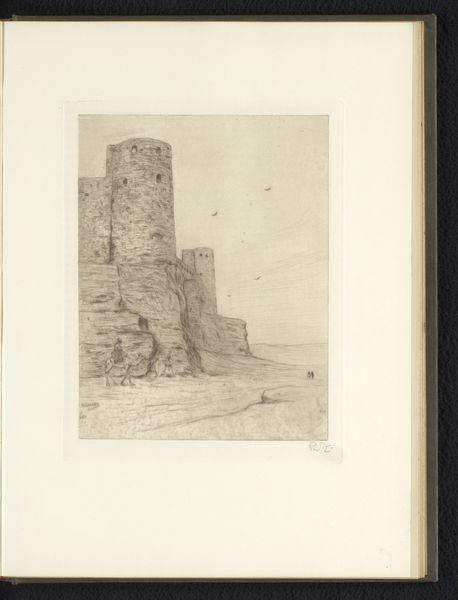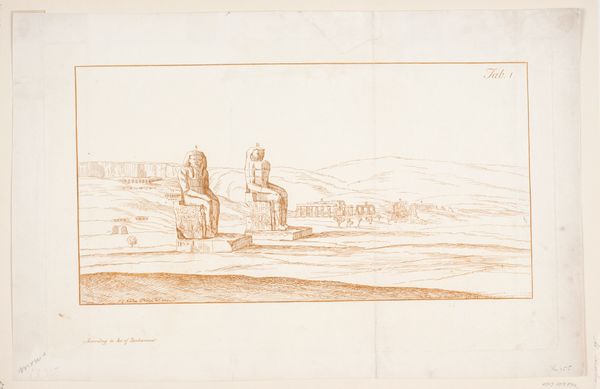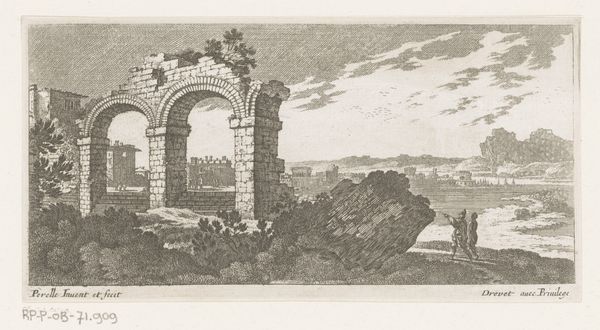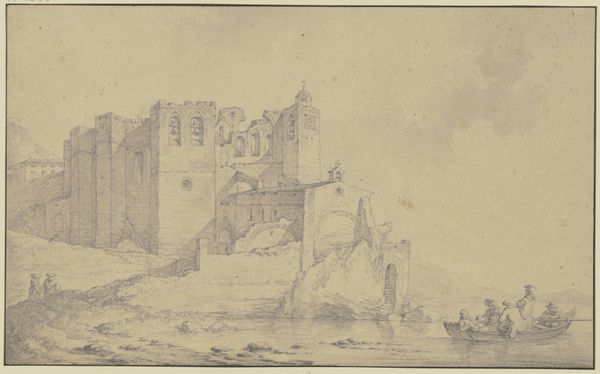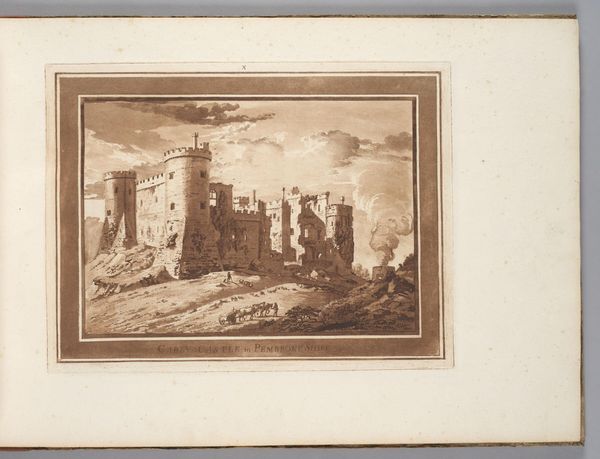
Perspective of a Rendering Round Temple in Ruins (probably Tempio della Speranza) 1710 - 1727
0:00
0:00
drawing, print, pencil
#
drawing
# print
#
perspective
#
romanesque
#
pencil
#
cityscape
#
history-painting
Dimensions: 13-1/8 x 17-9/16 in. (33.3 x 44.6 cm)
Copyright: Public Domain
Editor: Right now, we’re looking at Pietro Paolo Coccetti's "Perspective of a Rendering Round Temple in Ruins," probably painted between 1710 and 1727, rendered with pencil and print. I’m struck by its melancholy. This ruined temple feels isolated, like a forgotten memory. What draws your eye when you look at it? Curator: Isn't it fascinating how ruins evoke that sentiment? I see a meditation on time and the ephemeral nature of human achievement. Coccetti's careful depiction of the crumbling structure—notice the precise lines despite the subject's decay—suggests a bittersweet appreciation for the past. Do you notice how the round shape almost looks like a memory, a half-remembered coin? Editor: It's true, that circular shape almost makes it look dreamlike. So, the decay isn’t a sign of despair? Curator: Not necessarily despair, more of a wistful acceptance. It's as if Coccetti is reminding us that even the grandest structures eventually return to dust. And look at how much "dust" there is in this artwork: It is an excellent metaphor for both the passage of time and the material used to render the "drawing" itself. What I appreciate about ruins, if they aren't too terribly messed with, is that we find their truths that they won't willingly share otherwise! The broken stone speaking louder than pristine marble. Editor: I never considered the visual storytelling. Curator: Every crack, every missing stone tells a story. Think of it as archaeology through art, an interpretation of a lost narrative. Plus, ruins invite imagination: Who walked these stairs? What ceremonies took place within? I mean, seriously! Editor: It's certainly shifted my perception. I was so focused on the sadness; I didn’t really get how rich a history it held within the rendering. Thanks for the fresh eyes! Curator: My pleasure! Art should never sit quietly; it wants you in conversation with it.
Comments
No comments
Be the first to comment and join the conversation on the ultimate creative platform.
